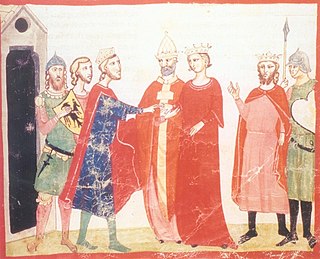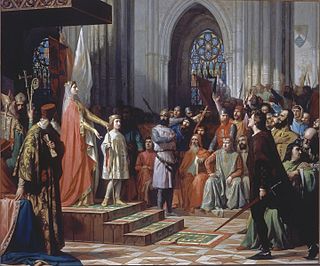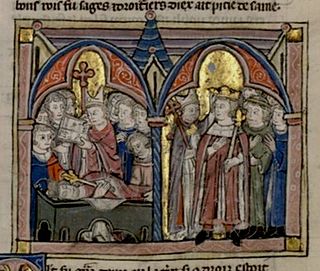
1648 (MDCXLVIII) was a leap year starting on Wednesday of the Gregorian calendar and a leap year starting on Saturday of the Julian calendar, the 1648th year of the Common Era (CE) and Anno Domini (AD) designations, the 648th year of the 2nd millennium, the 48th year of the 17th century, and the 9th year of the 1640s decade. As of the start of 1648, the Gregorian calendar was 10 days ahead of the Julian calendar, which remained in localized use until 1923.

1582 (MDLXXXII) was a common year starting on Monday in the Julian calendar, and a common year starting on Friday of the Proleptic Gregorian calendar. This year saw the beginning of the Gregorian calendar switch, when the papal bull Inter gravissimas introduced the Gregorian calendar, adopted by Spain, Portugal, the Polish–Lithuanian Commonwealth and most of present-day Italy from the start. In these countries, the year continued as normal through Thursday, October 4; the next day became Friday, October 15, like a common year starting on Friday. France followed two months later, letting Sunday, December 9 be followed by Monday, December 20. Other countries continued using the Julian calendar, switching calendars in later years, and the complete conversion to the Gregorian calendar was not entirely done until 1923.

Year 1154 (MCLIV) was a common year starting on Friday of the Julian calendar.

Year 709 (DCCIX) was a common year starting on Tuesday of the Julian calendar. The denomination 709 for this year has been used since the early medieval period, when the Anno Domini calendar era became the prevalent method in Europe for naming years.

Year 1225 (MCCXXV) was a common year starting on Wednesday of the Julian calendar.

Year 1127 (MCXXVII) was a common year starting on Saturday of the Julian calendar.

Year 1100 (MC) was a leap year starting on Sunday in the Julian calendar, the 1100th year of the Common Era (CE) and Anno Domini (AD) designations, the 100th year of the 2nd millennium, the 100th and last year of the 11th century, and the 1st year of the 1100s decade. In the proleptic Gregorian calendar, it was a non-leap century year starting on Monday.

Year 1101 (MCI) was a common year starting on Tuesday of the Julian calendar. It was the 2nd year of the 1100s decade, and the 1st year of the 12th century.

Year 663 (DCLXIII) was a common year starting on Sunday of the Julian calendar. The denomination 663 for this year has been used since the early medieval period, when the Anno Domini calendar era became the prevalent method in Europe for naming years.

1200 (MCC) was a leap year starting on Saturday of the Julian calendar, the 1200th year of the Common Era (CE) and Anno Domini (AD) designations, the 200th year of the 2nd millennium, the 100th and last year of the 12th century, and the 1st year of the 1200s decade. As of the start of 1200, the Gregorian calendar was 7 days ahead of the Julian calendar, which was the dominant calendar of the time.

Year 976 (CMLXXVI) was a leap year starting on Saturday of the Julian calendar.

1663 (MDCLXIII) was a common year starting on Monday of the Gregorian calendar and a common year starting on Thursday of the Julian calendar, the 1663rd year of the Common Era (CE) and Anno Domini (AD) designations, the 663rd year of the 2nd millennium, the 63rd year of the 17th century, and the 4th year of the 1660s decade. As of the start of 1663, the Gregorian calendar was 10 days ahead of the Julian calendar, which remained in localized use until 1923.
Year 1474 (MCDLXXIV) was a common year starting on Saturday of the Julian calendar.

Year 1295 (MCCXCV) was a common year starting on Saturday of the Julian calendar.

Year 1212 (MCCXII) was a leap year starting on Sunday of the Julian calendar.

Year 1236 (MCCXXXVI) was a leap year starting on Tuesday of the Julian calendar.

Year 1174 (MCLXXIV) was a common year starting on Tuesday of the Julian calendar, the 1174th year of the Common Era (CE) and Anno Domini (AD) designations, the 174th year of the 2nd millennium, the 74th year of the 12th century, and the 5th year of the 1170s decade.

Year 1245 (MCCXLV) was a common year starting on Sunday of the Julian calendar.

Year 1253 (MCCLIII) was a common year starting on Wednesday of the Julian calendar.

















